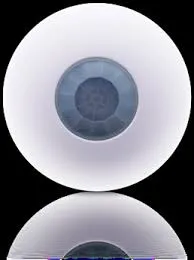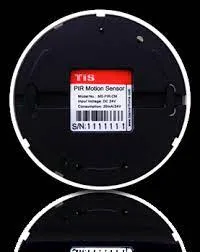The TIS-PIR-SENOR-MS-PIR-CM is a ceiling mount PIR motion sensor that can be used to control lighting, security systems, and other devices. It is part of the TIS system, which is a comprehensive building automation platform.
The TIS-PIR-SENOR-MS-PIR-CM is a ceiling mount PIR motion sensor that can be used to control lighting, security systems, and other devices. It is part of the TIS system, which is a comprehensive building automation platform.
Features:
Applications:
Benefits:
Example:
The TIS-PIR-SENOR-MS-PIR-CM can be used to create an automatic lighting control system. The sensor can be programmed to turn on the lights in a room when someone enters, and to turn them off when the room is unoccupied. This can save energy and improve security.
The sensor can also be used to trigger other devices, such as alarms or security cameras. For example, if the sensor detects motion in a room after hours, it could trigger an alarm to alert the homeowner.
The TIS-PIR-SENOR-MS-PIR-CM is a versatile and powerful sensor that can be used to improve energy efficiency, security, and convenience in a variety of applications.

Here are some reasons to use the TIS-PIR-SENOR-MS-PIR-M:
Here are some specific examples of how the TIS-PIR-SENOR-MS-PIR-M can be used:
Overall, the TIS-PIR-SENOR-MS-PIR-M is a versatile and cost-effective sensor that can be used to improve energy efficiency, security, and convenience in a variety of applications.

A passive infrared (PIR) sensor is an electronic sensor that measures infrared (IR) light radiating from objects in its field of view. PIR sensors are often used in security systems and motion-activated devices, such as automatic lights and faucets.
PIR sensors work by detecting changes in the amount of infrared radiation in their field of view. All objects emit infrared radiation, but the amount of radiation emitted depends on the temperature of the object. When a warm object, such as a person or animal, moves into the field of view of a PIR sensor, the sensor detects a change in the amount of infrared radiation and triggers an output signal.
PIR sensors are typically made up of two pyroelectric sensors. A pyroelectric sensor is a device that generates a voltage when it is exposed to infrared radiation. The two pyroelectric sensors in a PIR sensor are connected in such a way that they cancel out each other’s output when they are exposed to the same amount of infrared radiation. However, when the amount of infrared radiation on one sensor changes, the sensor generates a voltage. This voltage is amplified and used to trigger an output signal.
PIR sensors have a number of advantages over other types of motion sensors, such as ultrasonic sensors and microwave sensors. PIR sensors are relatively inexpensive, easy to install, and have a low power consumption. They are also not affected by air movement or dust.
PIR sensors are used in a wide variety of applications, including:
PIR sensors are a versatile and reliable technology that can be used to improve energy efficiency, security, and convenience in a variety of applications.
| Brand |
|---|
Reviews
There are no reviews yet.